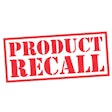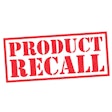The key to making more effective sales calls is in providing your customer with the information they need to make the best purchasing decisions. If a petfood manufacturer's sales representative can provide a store manager with data demonstrating strong sales of a particular product, they are more likely to get the shelf space for their product. In this article, we will examine how the right data can help a manufacturer get more of their product on the shelves and, ultimately, better sales figures.
What does it take?
Now, let's look at an example of two sales representatives on a call. Manufacturer A's salesman calls on You Pet Your Life, our fictional store. He walks the store, and is happy to see all his products neatly displayed on the last row of the petfood section. He makes small talk with the clerk, while the manager finishes a phone call. In his conversation with the manager, he asks how business has been, thanks her for being such a loyal customer and mentions the two new flavors of pet treats coming out.
Manufacturer B's salesperson calls on the same store the next day. The store manager is busy, but clears time on her schedule for a working session with the representative. Together, they review the results of last month's in-store demonstration and the increase in sales of the small bags of cat food which followed. The manager thanks the rep for recommending that she add those small bags in their previous meeting. They talk about the expanding line of treats, and the manager decides to make room for the new products by dropping the slow-selling treats from Manufacturer A.
What did the second salesperson do better? Obviously, the rep from Manufacturer B had done her homework. More precisely, she was armed with the store and SKU-level data and the analyses necessary to prove the value of her product line to You Pet Your Life. Of course, we all hope that our sales team is like that of Manufacturer B. Assuming we're not quite there just yet, let's examine the steps along the way to sales success.
What data do I need?
We all know that having a customer's buying history is a requirement in planning an effective sales call. We want as much detail as possible, going back as far as possible. But all that data can become overwhelming, so adjust your scope to what's manageable. SKU-level data are ideal, and typically two years of purchases summarized monthly are adequate.
The purchases history alone can't tell the story. What other events may have influenced the purchasing patterns? An often-overlooked element of the data is promotion history and results. Can we measure purchases during the period of a particular coupon or give-away campaign?
It's not only sales figures that are important. We also want to know what stores comprise the local competition for our customer, whether those stores are also our clients or not. Which of our SKUs do those stores carry, if any? On a regional or national basis, what percentage of the stores carry each SKU?
The distributor conundrum
If you sell through a distribution channel, how do you get the data you need? While some distributors will initially put up an argument like "that's my proprietary information," they will usually agree to share the data with you once you explain how you're going to use it to plan more effective sales calls. That's a classic win-win for the distributor.
In the petfood industry, the odds are they are already providing similar sales data to some of the petfood companies. There are also third parties who can act on your behalf in collecting the data. Sometimes this adds to a distributor's comfort level. When all else fails, a manufacturer can and should require detailed sales data on a monthly basis as part of their standard Distribution Agreements. There can be provisions to protect the distributor, such as an agreement not to share the data with any other distributor.
Making the investment
We all recognize that selling to our existing accounts is much easier than finding a new customer. So, if some additional effort would increase sales to the stores that already carry your merchandise, that's worth quite a lot, right? Can you afford not to make the effort?
Still, there are investments to be made here, and you might not be ready to take on all of the analysis for all your customers at once. Start simply, using a program like Excel and do the work "by hand" in spreadsheets for your top 10 accounts (or the top 10 per salesperson or sales manager, etc.), limiting history to the last few months. As you see results and refine your processes, you should consider more automated solutions that may have high up-front costs, but are relatively inexpensive to maintain.
You could also consider outsourcing the analysis work. Many petfood manufacturers tell us their core competency is in the science and the nutritional formulation of their products, not in crunching numbers. There are many avenues for these services, including some firms that work exclusively in the petfood industry. You can find these organizations on the Internet. Try doing a Google search for "petfood sales data."
Analyzing the data
Armed with the proper data, the possibilities for how to analyze it are virtually limitless. Let's examine three types of analyses likely to have the greatest impact on the effectiveness of your next sales call:
Effective sales
The most effective sales call is the one in which the time is spent discussing the future, not explaining the past. Do your homework by gathering and analyzing the historical data, establish specific goals based on the data and present your well-supported recommendations to your customer.

















